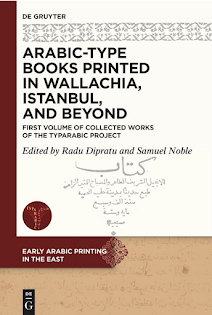Arabic original here.
Weeping over the Ruins
The meeting in Iznik, which welcomed the leaders of various churches and Christian groups to commemorate the 1700th anniversary of the First Council of Nicaea, ended in a symbolic scene amidst the ruins of the imperial palace and the Basilica of Saint Neophytus. The participants gathered to recite the Nicene-Constantinopolitan Creed, which still today defines the boundaries of the Christian faith, in an attempt to rekindle a spiritual spark that has gone out.
Patriarch Bartholomew opened the meeting with a speech in which he emphasized that the gathering is not merely a recognition of the past, but rather "a return to the pure source" that united the early Church and a call to proceed towards "perfection of unity." Pope Leo XIV, for his part, raised a direct theological question: "The 1700th anniversary of the First Council of Nicaea is a
precious opportunity to ask ourselves who Jesus Christ is in the lives
of men and women today and how we can live out our witness in a broken world," emphasizing that overcoming divisions is necessary for any credible evangelical witness.
Nevertheless, the symbolism of the scene appeared much greater than its results. Compared to previous ecumenical meetings, this meeting was rather weak in terms of its attendance and representiveness and it did not issue any joint statement that would indicate that real breakthrough has been made.
On a practical level, the most prominent disappointment was the lack of any progress on the issue of having a single date for celebrating Easter, the very issue where the late Pope Francis had hoped to see a historic step taken on this occasion. The project, however, remained suspended and the commemoration of Nicaea did not bear the fruit that was expected of it.
On the Orthodox side, the picture of crisis was most evident: the Patriarch of Constantinople, flanked only by the Patriarch of Alexandria and representatives of Antioch and Jerusalem, while the other Orthodox churches had not even been invited at all. This picture can be summarized with a single word: division.
This picture confirmed a fact that is already well-known: Orthodoxy is fragmented and Constantinople is incapable of bringing the churches together around the same table, despite efforts to revive the "Pentarchy" as a substitute for an absent Orthodox conciliarity. However, despite the efforts to dust off the Pentarchy, it remains an artifact of a bygone period of history and is worthless for administering a vast, scattered and diverse Orthodox world.
The lesson that imposes itself--and not only on Constantinople, but on all the Orthodox churches--is that any effort toward Christian unity starts with the unity of the Orthodox themselves and that talk of ecumenism in light of this rupture will only amount to a nice photo-op without any content.
The deeper lesson, however, is that to flee from Orthodox unity to the glory of the Pentarchy is to flee from the future to the past. The future is not made on the thrones of the past, but among the people of God scattered throughout the world and torn between nationalities and the diaspora, which the churches are unable to pastor as they should on account of their internal conflicts and power struggles.
Thus, there emerge questions that cannot be ignored:
Would it not have been better to invite all the Orthodox churches to Iznik?
Should the priority not have been to resolve the differences between the Orthodox before appearing to the world as a divided church?
Would it not have been wiser for the churches of the Pentarchy not to succumb to Constantinople's desire to present a flimsy and unrealistic image of Orthodoxy?
Would it not have been better for the Orthodox to practice Nicene conciliarity... instead of commemorating it in its absence, as it itself has been transformed into ruins?
The image of Iznik 1700 is not a celebration, but a mirror.
A mirror reflecting a church that weeps over the ruins of an empire that has turned to dust, singing of a conciliarity that has also become a ruin that only exists in her imagination, instead of building unity that reconciles the past and the future.
There remains a final question, not before the ruins of palaces but before Christ Himself:
When will the Orthodox realize that they are not the church of the empire, but the Church of Christ? And when will they leave the ruins to go and forge the future?








